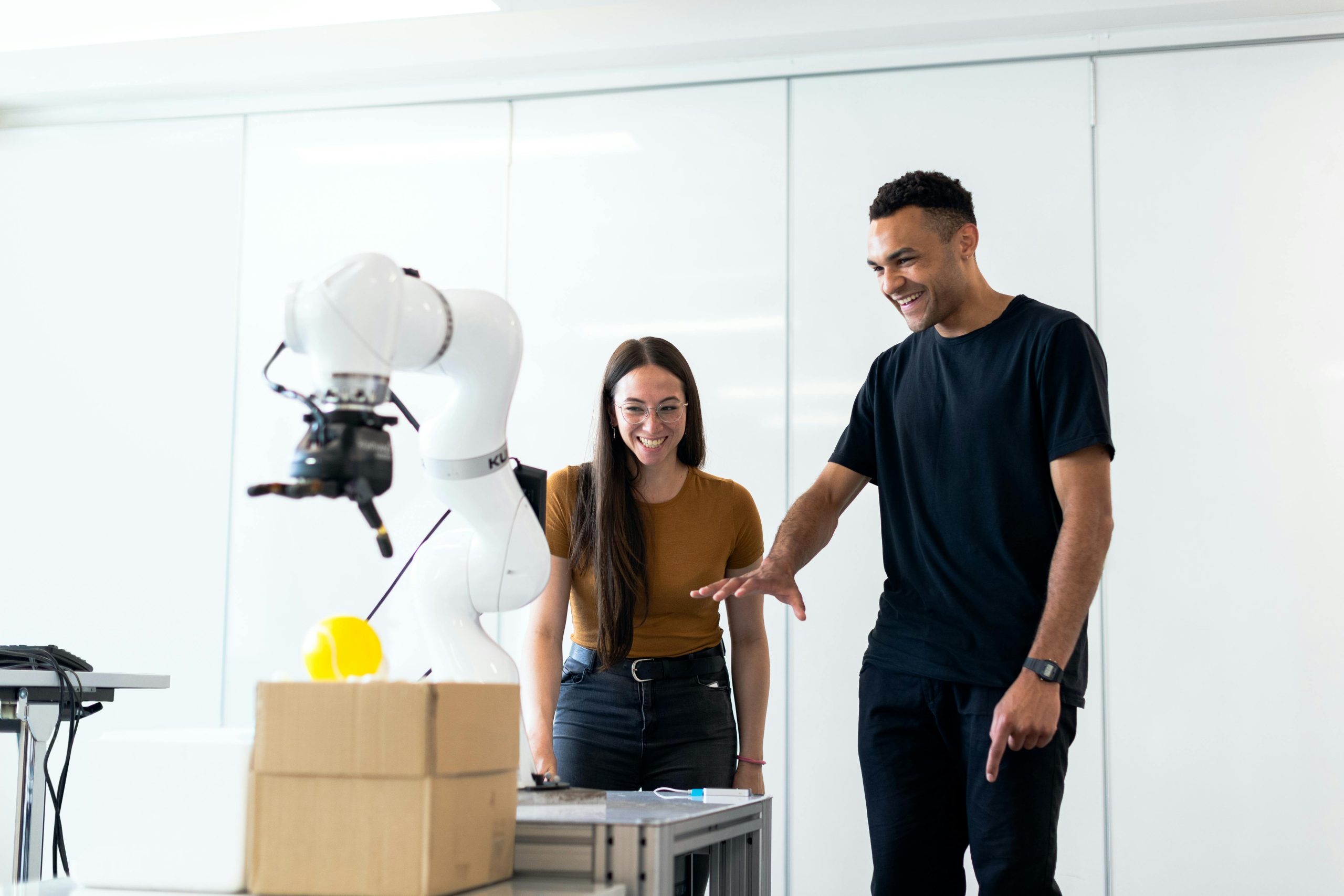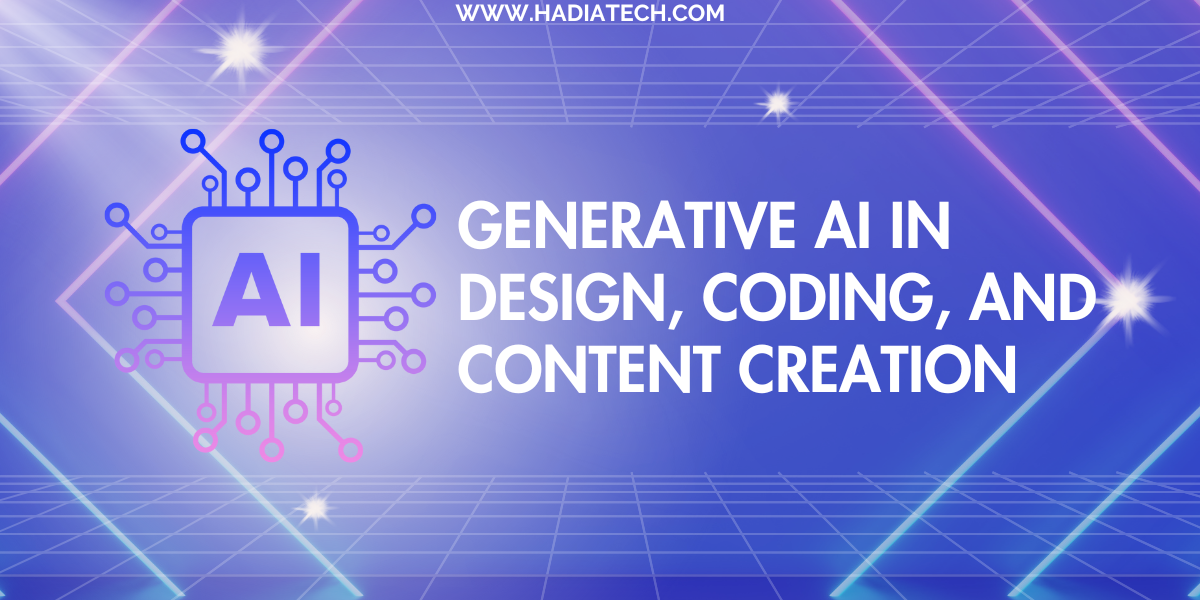Generative AI In Design, Coding, and Content Creation
Generative AI is revolutionizing the creativity world, revolutionizing how we code, design, and innovate. Through the use of advanced algorithms and machine learning, generative AI tools allow professionals and hobbyists to automate, enhance creativity, and generate high-quality output at speeds never before seen. This blog demonstrates how generative AI is revolutionizing these three big categories, its pros and cons, and what the future holds, making the content interesting and SEO-friendly.

What is Generative AI?
Generative AI is artificial intelligence software for computers that can generate original content, like images, text, code, or designs, from patterns learned from large sets of data. Unlike other AI, which only lives to examine or classify information, generative AI can generate original outputs, similar to human imagination. Examples are DALL·E, MidJourney, GitHub Copilot, and ChatGPT, which are answering graphics design, coding, and writing issues. They are accessible, easy to use, and commonly applied across creative disciplines.
Generative AI for Design
Generative AI is a revolution in the field of design. Creating software such as Adobe Firefly, MidJourney, and Canva AI assists designers in making incredible graphics in a matter of minutes. It just requires a user’s input of text, and they may get a logo, illustration, or web mockup based on their need. For example, with an input keyword term such as “minimalist coffee shop logo,” someone can get some design concepts within minutes, saving hours of efforts.
Benefits to Designers
Speed and Efficiency: Generative AI minimizes ideation and prototyping time, allowing designers to concentrate on improving their work.
Inspiration and Discovery: AI generates new design ideas, encouraging designers to think more creatively and creating new ideas.
Accessibility: Design is now accessible to non-designers and can be created by them to develop high-quality visual content, thereby making design available to small businesses and individuals.
Challenges
It is powerful, but there are certain drawbacks to generative AI in design. AI designs lack emotional subtlety or brand-specific subtlety like human designers. There is also a copyright and originality issue as AI is sourcing data from available datasets. Designers need to ensure their designs are original and adhere to intellectual property law.

Generative AI in Code
For coders, generative AI is a timesaver. GitHub Copilot, Replit, and Codeium are just a few of the pieces of software that help write, debug, and optimize code. Based on coding patterns, such programs provide code snippets, complete functions with just fill-in, or even complete programs as a natural language input response. For instance, a coder can input “write a Python function to sort a list” and get working code in seconds.
Benefits to Developers
No longer tedious tasks like boilerplate code, thanks to AI, which enables developers to concentrate on the complex logic.
Elimination of Errors: AI programs flag errors and auto-correct, enhancing the quality of coding.
Learning Assistant: Newbies can study coding by virtue of the use of AI, which interprets code and offers instant feedback.
Challenges
AI code is not perfect by any means. AI code is also able to generate suboptimal or insecure code that has to be resolved by human intervention. Excessive dependency on AI tools may also keep coders away from learning fundamental coding skills. Moreover, the ethics of AI scraping proprietary codebases raise issues of rights to data and privacy.

Generative AI in Content Creation
Content generation has also been transformed with generative AI tools such as ChatGPT, Jasper, and Copy.ai. They generate blog content, social media content, marketing copy, and even creative writing based on their input prompts. For instance, a marketer can input “write a 500-word blog on green fashion” and get a well-structured draft in seconds.
Benefits for Content Creators
Time Savings: AI creates drafts in seconds, so writers can devote more time to editing and customizing.”
Scalability: Companies can create massive amounts of content for SEO, social media, or email campaigns.
Multilingual Capabilities: AI can create content in many languages and make it accessible to international crowds.
Challenges
Machine writing lacks the original voice or creativity that readers love. It can also produce boilerplate or misleading factitious content if not well guided. To avoid doing so, human editors have to review AI-generated text and ensure it is in brand tone and values. Search engines such as Google also value unique and quality content, and unedited over-reliance on AI can disrupt SEO rankings.
The Future of Generative AI
Generative AI capabilities for design, coding, and content creation are astounding. With improvements in algorithms, we can expect even more natural interfaces that are great at contextual understanding and producing very personalized outputs. Along with augmented reality (AR) and virtual reality (VR), this can have a game-changing effect on design, and AI code generation can result in end-to-end autonomous software development pipelines. In content creation, AI is most likely to be able to develop emotionally rich narratives or extremely customized advertising campaigns.
Such advancements, however, need to be ethical. Data bias issues, intellectual property rights, and job losses need to be taken care of to ensure that generative AI is useful for society. The future will increasingly be one dictated by machine speed and human creativity in the guise of AI and human creators.
Best Practices for Utilizing Generative AI
Fine-Tune AI Outputs: Edit and personalize AI outputs on a consistent basis to ensure originality and accordance with your intentions.
Merge with Human Abilities: Use AI as a process to augment and not replace human imagination and technical skills.
Stay Current: Familiarize yourself with the newest AI tools and functionalities to be able to reach their full potential.
Monitor Over Ethical Matters: Make sure AI-generated content is in accordance with copyright laws and ethics.

Conclusion: Generative AI and Its Benefits
Generative AI is revolutionizing design, code, and content creation at pace, scale, and expense. While it presents challenges around originality and ethics, the advantages must not be dismissed. Creatives can tap into new levels of productivity and innovation with the strategic inclusion of generative AI. With technology constantly changing, so does the method we create, and it’s an inspiring time for designers, developers, and creators.




